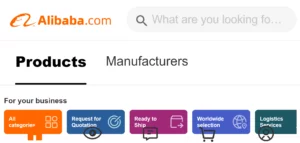Multivendor marketplaces, such as Amazon, Alibaba, and eBay, have revolutionized the ecommerce industry. As a result, there is a renewed drive to create such multivendor websites for a wider demographic.
Instead of starting from scratch with bespoke coding, setting up an ecommerce store is the most time-efficient option. Since both WordPress and WooCommerce are free and open-source, you may customize them any way you’d like. This includes adding as many vendors as possible to provide your customers with additional selections.
Benefits Of Multivendor Marketplaces
- The more vendors you work with, the more things you can provide, and the more clients you’ll get.
You can expand your multivendor business by adding more products and, in turn, more customers. A multi-vendor online marketplace is one where many sellers each sell their own unique wares. Consumers benefit since they can shop more efficiently and spend less time doing so.
If the market sold only one type of product, fewer people would visit. The streamlined digital storefront and wide variety of customers attract many vendors to the multi-vendor eCommerce marketplace concept. Because of these reasons, every eCommerce business should think about adopting a multivendor marketplace model.
- Reap the rewards of a streamlined inventory management system and access to a wide range of vendors
In the early stages of an online shop’s existence, there likely won’t be enough money to buy a lot of stock. Nevertheless, it is the responsibility of each vendor in a marketplace with multiple sellers to maintain adequate stock levels. The company may now put more money into growing its business and improving its website.
- Lowers overall operating costs
Spending on R&D, stockpiling, or a distribution network is unnecessary in a market with several suppliers. All these factors have an impact on the market and sellers.
Multivendor marketplace players can focus on other responsibilities such as social media marketing, global customer expansion, or site maintenance. Thus, businesses can decrease expenses even more by hiring fewer people.
The multivendor marketplace can rapidly and easily make online stores with Webnexs or another large multi-vendor eCommerce marketplace software supplier. With this support, you can build a fully configurable, feature-rich online market.
- Gains by simplifying financial matters
Marketplaces can create considerable revenues much more quickly than if they focused on just one type of thing because there is such a vast array of products and customers to pick from.
They get a cut of the profits made by each vendor, the amount of which is entirely up to them. The higher the number of vendors, the greater the volume of transactions, and hence the greater the commission income for the marketplace.
Drawbacks Of Multivendor Marketplaces
- The War to the Bottom
A thriving multivendor marketplace ensures a wide variety of products and services for buyers because there are always several options for each given product. That might set up a price war as companies try to corner more of the market. This only means less money for the marketplace from sellers for each sale made on the platform.
- Maintenance of High Standards
It would be hard for the multivendor marketplace owner to perform a comprehensive quality check on every product because the sellers provide such a wide variety of goods. If too many vendors provide low-quality or counterfeit products, consumers may lose faith in the marketplace as a whole.
However, this problem is typically alleviated by implementing a customer rating system for each merchant and eliminating those whose ratings fall below a threshold. It’s possible to do so on Amazon, where you’ll also get customer reviews and feedback on the goods and vendor.
- Delivery Management Services
A multivendor marketplace has a duty to ensure the quality of the products being delivered, and this requires well-oiled logistics to ensure the timely and secure transport of commodities. It can be expensive and time-consuming to manage these logistics if a market serves customers from more than one country. Mostly, this issue can be solved by installing a dynamic online storefront that allows the marketplace owner to track deliveries from all vendors in one location.
- Consumer Relationship Management
While merchants are accountable for the quality of their items, the marketplace should still exercise vigilance in monitoring deliveries. Transportation of commodities must be well-planned and executed to avoid delays and assure safety. Logistics management can be time-consuming and labor-intensive if a market services customers from a wide geographical region.
Top Successful Multivendor Marketplaces of 2023
1. Etsy

Etsy is a popular multivendor marketplace for handmade, vintage, and unique goods. It has over 4.4 million active sellers and over 90 million active buyers as of 2021. In 2020, Etsy reported a total revenue of $1.7 billion, up 111% from the previous year Ah, Etsy – the multivendor marketplace that’s the virtual equivalent of a quirky, indie boutique. It’s like if your favorite flea market and your go-to craft store had a digital love child.
If you’re looking for unique, handmade, or vintage items, Etsy is the place to be. This multivendor marketplace is like a treasure trove of one-of-a-kind finds, where you can discover everything from hand-knitted sweaters to upcycled furniture to custom pet portraits (yes, really).
And the best part? You’re supporting independent sellers who pour their hearts and souls into their creations. You’re not just buying a product but supporting a small business and its dreams. It’s like a warm, fuzzy feeling wrapped in a package with a cute bow.
Plus, this multivendor marketplace community on Etsy is unlike any other. It’s like a secret club of creatives and crafters where everyone can share their talents and connect with like-minded individuals. It’s like a big, virtual crafting circle without the risk of getting poked with a needle.
And, as a seller on Etsy, you have access to a massive audience of buyers actively seeking out unique and handmade items. You don’t have to worry about marketing or advertising – Etsy does that for you, and it’s like having your marketing team without expensive suits and stuffy meetings.
- Seller storefronts
- Product listings
- Order management
- Reviews and ratings
- Community features
2. Fiverr
Fiverr is a global marketplace for freelance services, with over 3 million registered sellers and over 2.8 million active buyers. In 2020, Fiverr reported a total revenue of $189.5 million, up 77% from the previous year.
Fiverr – the multivendor marketplace that’s like a digital swap meet, but instead of bartering with goods, you’re trading skills and services. It’s like a giant online bazaar where you can find everything from logo design to ghostwriting to tarot card readings (yep, you read that right).
The best part? It’s all done remotely, so you can work with people worldwide without ever leaving your couch. It’s like a digital version of Carmen San Diego – except you do the detective work to find the perfect freelancer for your needs.
And this multivendor marketplace community on Fiverr is unlike any other. It’s like a melting pot of talent and creativity where you can connect with people with skills you didn’t even know existed. It’s like a matchmaking service for freelancers and clients, but without awkward small talk.
As a seller on Fiverr, you can work on your terms, set prices, and offer unique services. It’s like being your own boss without the stress of overhead costs and HR paperwork. And as a buyer, you have access to a wide range of freelancers with different skill sets and price points, making it easy to find the perfect fit for your project.
So, whether you’re a freelancer looking to expand your business or a buyer looking for top-notch services, Fiverr is the place to be. It’s like a digital bazaar of talent and creativity, where you can find exactly what you’re looking for – and discover something new along the way. So go ahead, dive in, and see what digital treasures you can find.
- Gig listings
- Search and discovery
- Communication and collaboration
- Order management
- Payment processing
- Ratings and feedback
- Fiverr Pro
3. Alibaba

A Chinese ecommerce company operates multiple multivendor marketplaces, including Alibaba.com and Taobao. In 2020, Alibaba reported a total revenue of $107.9 billion, up 41% from the previous year.
Alibaba – the multivendor marketplace that’s like a giant online shopping mall, but instead of designer clothes and shoes, you can find everything from raw materials to industrial machinery. It’s as if Amazon and Home Depot had a digital baby.
If you’re looking for bulk orders of products, Alibaba is the place to be. It’s like a treasure trove of supplies, where you can find everything from raw materials to finished products. It’s like a warehouse club on steroids but without the membership fee.
And the best part? You’re buying directly from manufacturers and suppliers, cutting out the middleman and getting the best possible prices. It’s like a digital version of haggling at the market without the language barrier.
Plus, the variety on Alibaba is truly mind-boggling. It’s like a smorgasbord of products and supplies, where you can find anything from solar panels to yoga mats to custom-made wedding dresses (yes, really). It’s like a digital version of Mary Poppins’ bag – you never know what you will pull out.
And, as a seller on Alibaba, you have access to a massive audience of buyers from all over the world. It’s like having a global marketplace at your fingertips, where you can expand your business and reach new customers. It’s like a digital version of “the world is your oyster.”
So, if you’re looking to source products or supplies in bulk, Alibaba is the place to go. It’s like a digital version of a Costco run without crowds and oversized shopping carts. And who knows, you’ll even find your next big business venture – like importing artisanal cheeses or creating eco-friendly products. Alibaba truly is a vast and varied world of possibilities.
- Product listings
- Search and discovery
- Communication and negotiation
- Order management
- Payment processing
- Trade assurance
- Alibaba Cloud
4. Airbnb

Airbnb is a popular online marketplace for short-term vacation rentals and experiences, and it has over 7 million listings in over 220 countries and regions. In 2019, Airbnb reported a total revenue of $4.8 billion, up 32% from the previous year.
If you’re looking for unique and affordable accommodations, Airbnb is the place to be. It’s like a treasure trove of cozy apartments, quirky cottages, and luxurious villas where you can find the perfect home away from home for your next adventure.
And the best part? You can live like a local, experiencing the city or town from a unique perspective. It’s like a personal tour guide built right into your lodging. You’ll know all the best places to eat, shop, and explore like a true insider.
Plus, the variety on Airbnb is truly mind-boggling. It’s like an array of lodgings, where you can find anything from a cozy treehouse to a yacht to a castle (yes, really). It’s like a digital version of a choose-your-own-adventure book.
And, as a host on Airbnb, you can meet people worldwide and share your love for your city or town. It’s like being an ambassador for your community, showing off the best it offers visitors from near and far.
So, if you’re looking for a unique and personalized travel experience, Airbnb is the place to go. It’s like a digital version of staying with an incredible friend without the awkwardness of crashing on their couch. And who knows, you’ll even make a new friend or two – like the friendly neighbor who brings over fresh-baked cookies or the local bartender who makes the best margaritas. Airbnb truly is a world of possibilities where you can create your adventure and make memories that last a lifetime.
- Listing creation
- Search and discovery
- Communication and booking
- Review system
- Trust and safety
- Experiences
- Airbnb Plus and Luxe
5. Amazon
Amazon is the world’s largest e-commerce company and operates a multivendor marketplace where third-party sellers can sell their products. In 2020, Amazon reported a total revenue of $386 billion, up 38% from the previous year.
Ah, Amazon – the multivendor marketplace like the ultimate digital mall. It’s like a wonderland of products, where you can find anything from toilet paper to unicorn onesies to live ladybugs (yes, really).
If you’re looking for convenience and variety, Amazon is the place to be. It’s like having a personal shopper who can get you anything you want, whenever you want it. It’s like a digital version of the Genie from Aladdin – make a wish, and Amazon will deliver. It’s like a digital version of a shopping spree but without the crowds and the long lines.
Plus, the Prime membership is truly a game-changer. It’s like a magic wand that makes all your shopping dreams come true – with free two-day shipping, access to exclusive deals, and streaming of movies and TV shows. It’s like a digital version of a VIP club but without the velvet rope.
And, as a seller on Amazon, you have access to a massive audience of buyers worldwide. It’s like having your own personal storefront to showcase your products to millions of potential customers. It’s like a digital version of a pop-up shop but without the hassle of setting it up and tearing it down.
So, if you’re looking for convenience, variety, and the ultimate shopping experience, Amazon is the place to go. It’s like a digital version of Santa’s workshop, where you can find anything your heart desires – from the practical to the whimsical. And who knows, maybe you’ll even discover your new favorite hobby – like beekeeping or indoor gardening.
- Product listings
- Search and discovery
- Communication and feedback
- Order management
- Payment processing
- Fulfilment by Amazon (FBA)
- Amazon Prime
Conclusion
A multivendor marketplace is like having a superhero sidekick at your side if you’re a business owner seeking development and expansion. It’s the best resource for companies who wish to forge strong bonds with other suppliers while also expanding their reach with customers.
And who doesn’t appreciate a well-run market, really? It functions similarly to an online shopping mall in that it provides access to a large selection of goods and services from numerous vendors. It’s exciting because you never know what you’ll find.
FAQs About Multivendor Marketplaces
What are the most critical aspects of a multivendor marketplace?
A few characteristics of a multivendor marketplace are:
- Registration and onboarding for vendors: vendors can join the platform and set up an online storefront.
- Sellers should be able to add and manage listings for their goods and services.
- Handle incoming payments from customers and make outgoing payments to suppliers.
- Tracking, fulfilling, and returning orders are all part of order management.
- Assist both customers and suppliers with any issues they may have.
- Customer-submitted evaluations of businesses and their offerings.
To what extent can competitive prices and a wide selection of vendors benefit consumers?
Commissions, advertising fees, and fees for various “value-added” services are all potential revenue streams for multi-vendor marketplaces. In addition, this helps the platform’s proprietor foster a vibrant marketplace, mine valuable data, and enhance the user experience.
Customers benefit from many offerings, low costs, and a nice atmosphere. Suppliers can offer wares in the multivendor marketplace without launching an online storefront. A broad audience is available to them, and they can increase sales by using the platform’s advertising and promotion.
How can I launch a multivendor marketplace?
It is essential to plan and execute the launch of a multi-vendor marketplace thoroughly. Choose your niche, pick the right platform, network with other sellers, and promote your wares to win over buyers. WooCommerce, Magento, Shopify, and OpenCart are a few of the most well-liked options for constructing a multi-vendor marketplace.
Alternatively, you might employ a development team to create a specialized platform. It’s worth stressing the time, energy, and money commitment to launch a multi-vendor marketplace. Before beginning this endeavor, it is crucial to do extensive research and build a complete business plan.





